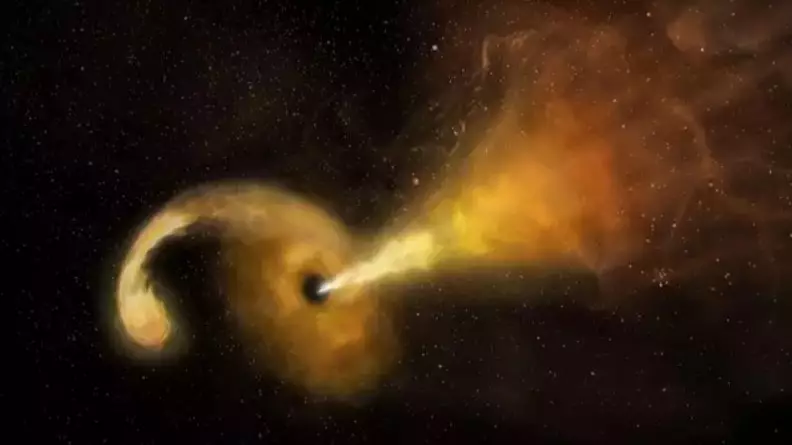
In the middle of our Milky Way sits a black hole... it's actually a 'supermassive black hole'. Impressive, huh?
Well, you might not be as impressed when you find out that it erupted back in May 2019 and not a soul can explain why it happened. But don't worry, we're all safe, given that the black hole is 26,000 light years away.
The hole - which is also referred to as Sagittarius A*, or Sgr A* for short - emitted what is said to have been a large burst of infrared radiation and became 75 times brighter than usual.
Astronomer Tuan Do, who is part of a team studying Sgr A* at the University of California Los Angeles, said that the flash could be the result of another star passing close by. Another theory is that the light was caused by G2, a gas cloud known to have passed close to the black hole five years ago.
Advert
Do told ScienceAlert: "I was pretty surprised at first and then very excited.
"The black hole was so bright I at first mistook it for the star S0-2, because I had never seen Sgr A* that bright. Over the next few frames, though, it was clear the source was variable and had to be the black hole.
"I knew almost right away there was probably something interesting going on with the black hole."
Phil Plait, an American astronomer who also runs a blog, tweeted to explain that he isn't sure what caused the bright eruption but, like Tuan, puts it down to a number of possibilities, including a passing star and also a cloud of dust.
Advert
He added: "Or it was something else entirely. It's hard to observe the black hole, because the dust between us and it covers a multitude of its sins. Also, the Sun passes this part of the sky making it unobservable for months at a time starting in the late fall."
He also wrote: "I know it doesn't look like much, but that's MATTER FALLING INTO A GINORMOUS BLACK HOLE AND BLASTING OUT THOUSANDS OF TIMES THE ENERGY OF THE SUN. Seen from HUNDREDS OF THOUSANDS OF TRILLIONS OF KILOMETERS AWAY. So, *yeah*.
"Sometimes I wish stuff were closer so we could see it better, and sometimes I'm glad it's really far away. This is a little of both."
Featured Image Credit: Sophie Dagnello NRAO/AUI/NSF; NASA, STScITopics: Science, World News, News, space